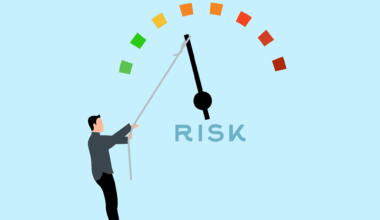Trade Promotion and Exhibition Trends in the Post-Pandemic World
As the global economy begins to reestablish itself after the disruptions caused by the pandemic, trade promotion and exhibitions are adapting to new expectations and realities. Businesses must navigate altered consumer behaviors, digital transformations, and evolving health regulations that affect their participation in trade shows. Traditionally vital for networking and deal-making, these events are incorporating enhanced safety measures and innovative formats. Hybrid events have surged in popularity, combining physical interactions with digital accessibility. This evolution allows greater reach while still prioritizing the health of attendees. Exhibitors must now adapt their strategies to maximize the benefits of both in-person and virtual models. Additionally, the integration of technology such as augmented reality and artificial intelligence allows exhibitions to offer immersive experiences. Businesses can leverage data analytics to tailor their offerings, ensuring relevance in a fluctuating market. Understanding these trends is critical for companies aiming to thrive in the competitive landscape. The adaptation of trade promotions can ensure that businesses not only survive but also draw in new clientele while enhancing relationships with existing customers.
The Rise of Hybrid Events
In the modern landscape of trade promotion and exhibition, hybrid events are revolutionizing how businesses engage with their audiences. Companies now plan for increased flexibility by integrating both physical gatherings and virtual platforms. This allows them to connect with a wider audience base across different geographical locations. Hybrid events enhance accessibility, enabling individuals who cannot attend physically to participate from anywhere in the world. As a result, companies can exhibit their products and services to an unprecedented number of potential customers. The importance of live interactions complements digital participation, creating a dynamic environment fostering networking opportunities. Additionally, advancements in video conferencing technology contribute to the enhanced experience of hybrid events. This trend has transformed how recruiters and exhibitors approach marketing and customer interactions. Potential clients benefit from unlimited access to information through engaging content, making informed decisions easier. Furthermore, businesses can gather invaluable data to assess engagement levels and improve future events. Understanding this evolution is vital for success, as organizations must remain agile in adapting their strategies to meet changing market demands and audience needs.
Diverse exhibition formats are also contributing to the transformation of trade promotion strategies as organizations pivot to post-pandemic norms. Traditional booths are being replaced by unique, interactive spaces that prioritize visitor experience and engagement instead of conventional models. Companies now focus on creating telltale signature setups that reflect their brand identity, emphasizing innovation and creativity. Showcasing products through live demonstrations, workshops, and interactive displays amplifies visitors’ connections with brands. The shift towards experiential marketing strategies allows businesses to leave lasting impressions on their audience. Moreover, exhibitors increasingly prioritize sustainability by reducing waste and promoting eco-friendly practices. A multitude of companies now utilize technology to minimize print materials, opting for digital brochures and interactive displays instead. As expectations evolve, visitors are keenly interested in sustainable practices, which can offer a significant competitive edge to exhibitors prioritizing such initiatives. The focus on experiential and sustainable efforts not only enhances the visitor experience but fosters brand loyalty among consumers. This demographic increasingly values companies committed to corporate social responsibility, leading to meaningful connections. It marks a pivotal moment for trade promotion and exhibitions to evolve further.
Leveraging Technology and Data Analytics
Another significant trend arising in post-pandemic trade exhibitions is the pivotal role of technology and data analytics in shaping attendee experiences. Businesses can better analyze visitor behavior patterns, allowing for tailored interactions that resonate with attendees. Advanced tools such as mobile apps and QR codes facilitate seamless interactions, helping exhibitors streamline networking efforts and attendance management. Furthermore, companies increasingly deploy analytics software to gather insights on attendee engagement, tracking behaviors to refine future marketing strategies. This tech-centric approach fosters personalized experiences, cultivating conversions and enhancing customer relationships. Specifically, augmented and virtual reality tools create immersive spaces that captivate audiences, integrating an entertaining aspect to exhibitions. Companies can now create simulations showcasing how products fit in real-life scenarios, leaving a lasting impact on the audience. In this data-driven environment, success relies on the ability to adapt marketing efforts based on customer preferences. Embracing technology isn’t just an option; it is essential for thriving in a competitive space. Executives must prioritize these developments and recognize their significant contributions to achieving favorable results and driving future innovation.
As businesses navigate changing consumer expectations, creating strong partnerships within the industry becomes critical. Collaboration among brands, associations, and service providers ensures a more enriching experience for attendees. Networking opportunities are maximized through synergies, which open doors for co-promotions and shared resources. Additionally, industries can pool efforts towards raising standards and establishing meaningful experiences. Joint ventures offer businesses an opportunity to showcase complementary products, amplifying exposure for all parties involved. Forming alliances helps consolidate resources, reducing financial burdens on individual companies participating in trade exhibitions. Establishing a solid network provides access to valuable educational content, industry insights, and best practices adopted within the sector. As a result, companies can collectively navigate the complexities of the post-pandemic environment. Moreover, cross-industry partnerships can lead to innovative ideas and greater creativity in planning exhibitions. Exhibitors committed to collaboration can establish themselves as thoughtful leaders within their respective fields, allowing for a broader reach. Ultimately, ushering in a new era of trade promotion requires openness to partnerships, reinforcing a collective commitment to success.
Adaptability and Resilience
Trade promotions and exhibitions post-pandemic increasingly emphasize the importance of adaptability and resilience in a climate of continuous change. As uncertainties linger, businesses must embrace change and optimize their operations to thrive. Developing agile strategies ensures organizations can respond effectively to emergent trends quietly surfacing in the marketplace. Flexibility is key in executing plans that cater to shifting consumer preferences, market conditions, and even global events. Organizations will need to consistently evaluate their exhibitions, allowing room for evolution and modification as necessary. Establishing responsive teams well-versed in industry changes empowers businesses to address challenges proactively. Companies that successfully adapt can seize opportunities, build loyalty with attendees, and strengthen their competitive edge. Resilience fuels innovation, pushing organizations to reinvent traditional practices while exploring potential growth avenues. Investing resources into enhancing creativity, marketing, and technologies can differentiate brands in a saturated marketplace. Exhibitors that embody adaptability can pivot strategies efficiently while capitalizing on emerging trends, ultimately leading to successful trade promotions. The need for clever, evolving solutions becomes imperative for long-term sustainability as business landscapes continue to transform based on dynamic influences.
In conclusion, the trade promotion and exhibition landscape is poised for exciting developments following the pandemic. By embracing change, businesses have the opportunity to redefine their engagement strategies and carve out unique positions within their industries. The fusion of physical and virtual events enables broader outreach, capitalizing on newly established consumer behaviors forged during this period. Innovative technologies and creative approaches foster deeper connections with attendees, driving customer loyalty. As organizations adapt and reimagine their promotional efforts, collaboration emerges as a powerful tool, strengthening industry relationships. Leveraging data analytics is essential for informed decision-making, enhancing relevance and audience engagement. The emphasis on sustainability reflects an overarching recognition of corporate responsibility, fueling progressive changes in the sector. Above all, adaptability remains a core component guiding businesses toward success in the evolving trade promotion environment. Those willing to invest in innovation and adjust their tactics will undoubtedly emerge as leaders in the post-pandemic world. While challenges persist, understanding these transformative trends enables organizations to remain relevant and thrive for years to come. The future of trade promotion awaits, presenting endless possibilities.
The strategies recognized today will shape tomorrow’s exhibitions and ensure they remain engaging and impactful in the years ahead.


